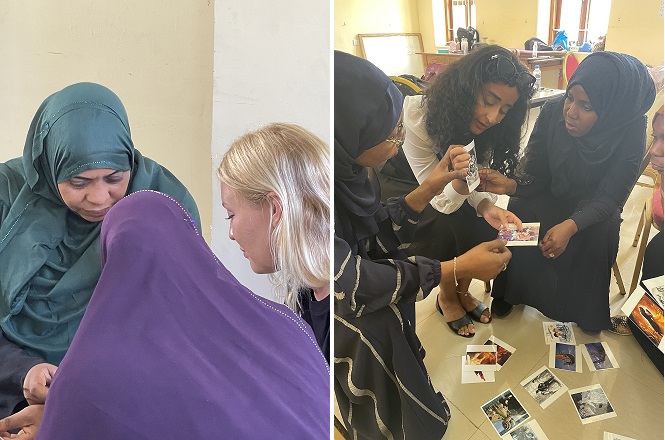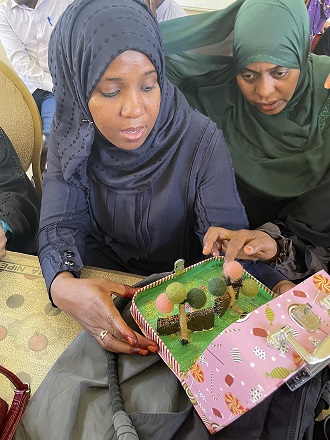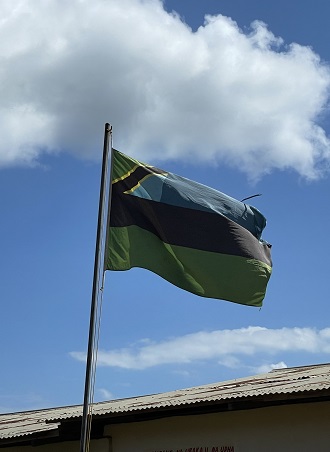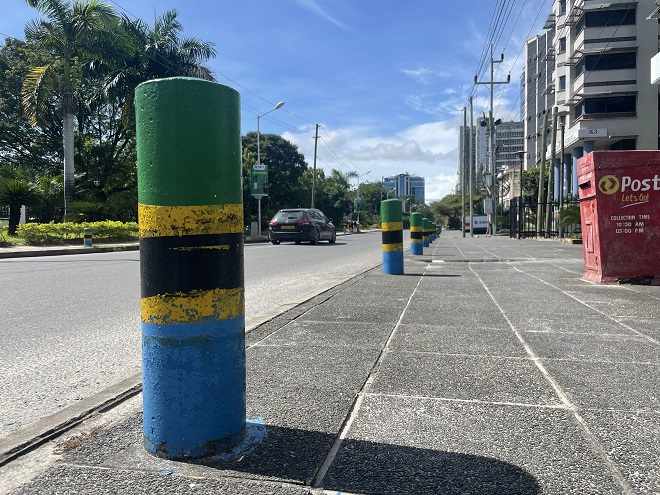Once upon a time, two whimsical lecturers were going out into the big world to teach. The two lecturers were us, Gunhild Brænne Bjørnstad and Ragnhild Louise Næsje. We both work at the Faculty of Teacher Education and Languages at Østfold University College (HiØ), and have an exciting collaboration with the State University of Zanzibar (SUZA), called the NoZa project, financed with funds from the NOTED program (text in Norwegian) under DIKU. It was therefore natural to book plane tickets, pack a suitcase and travel to the spice island of Zanzibar on Africa's East Coast.
Joint course for student teachers
In Zanzibar, the teacher training programmes at the two institutions have created a joint course for their student teachers. The course is about multicultural pedagogy and intercultural encounters, and is called Multicultural Pedagogies/Learning together – education for multicultural democracies. To prepare the future teachers for a diverse classroom, they will learn about different school systems, understandings of democracy and active citizenship. As part of the collaborative project, teacher and student mobility is an important element to ensure reciprocity. At the time of writing, HiØ has four excellent students in place in Zanzibar, and we are expecting a visit from a total of ten Zanzibar students in the autumn; of which four will exchange for five months and take subjects at HiØ, while six will visit schools and observe for five weeks in our practice schools. The idea is that by experiencing each other's everyday school life and culture, and themselves in the face of another culture, the student teachers' awareness and ability to handle diverse classrooms and educate students for democratic practice is strengthened.

Experiences from teaching

One of the whimsical lecturers, Ragnhild, works specifically aimed at beginners' training in reading and writing, and dissemination of literature for the youngest, within the subject Norwegian language. The other one, the drama teacher Gunhild, is particularly concerned with aesthetic learning processes and active learning. In the course on multicultural pedagogy, we were to teach oral traditions and storytelling together. In order to carry out the teaching as we wanted, we packed with us our oral traditions, storytelling skills and other remedies that we thought would be useful in Zanzibar. These remedies included homemade story cards and a storybox, not to forget our bodies, which we were going to use to demonstrate different ways of working with storytelling.

Zanzibar, which is part of Tanzania and lies off the East Coast of Africa, is a melting pot of different ethnic and cultural expressions. In this island community, we find a majority of Muslims, but also many Christians, Hindus and Buddhists. The architecture is characterized by a long history of trade og goods and slaves with both the Arab, Indian and European world. In recent decades, tourism has also left its mark on Stonetown, capital of the island, along with the white beaches.
Once in the classroom at the university, we were relieved to see that there was a fan in the ceiling so we would not melt. Chairs and tables were cleared away and we made space for the multicultural pedagogy to prevail. The students entered this classroom, slowly but surely. In the encounter between the Norwegian and Zanzibar students, magical moments arose creating new knowledge across cultures and storytelling traditions. They discovered that there were both similarities and differences in our traditions, and that as a teacher in the multicultural classroom you have to draw on the interliterary in order to include and embrace everyone.
There was a lot of laughter and fun when the students had to lead each other as blind people into a fairytale, and heated discussions when they had to categorize the different storytelling cards. The future teachers created new narratives from old, established narratives, and enhanced their intertextual, interliterary, intercultural and adaptation skills. Narratives that were established and familiar to some were unknown to others. This also created moments of negotiation when those who knew the story were challenged to make new connections and see possibilities with the stories.
Communicating cultural heritage in a multicultural classroom

The students were given the task of selecting and narrating a story to someone with a different cultural background. To be able to do this task, we, as teachers, had to act as rolemodels. Because, how can you convey the story of how the bear became stubble to a congregation that has never experienced snow and ice? Which parts of a culture and society must the listener be familiar with, in order to understand such a text? Which parts of the under-communicated and cultural knowledge must you, as the narrator, explain and exemplify so that the recipient from another part of the world can understand what the story is about? This resulted in many funny moments. The Zanzibarian students looked like big question marks when we told the traditional tale of the bear that was stumped, without arranging the story for them. Because what is frozen water, what is a bear and what happens when you tug at something that is frozen solid? How are you supposed to understand these textual images when you may not even have a freezer at home? With the help of exemplifications, explanations and conversations, we tried to give them some form of familiarity with these culturally conditioned phenomena.
The important intercultural competence
In our approach to frozen waters, dark forests, foxes, bears and severed bear tails, without visual support, we drew on our own cultural experience. We have both lived for several years in Africa, either as a child or as an adult, and use this experience actively to interpret when the students lose their concentration, what needs to be elaborated on, or assess which examples we should use. Such encounters between cultures enable us to communicate across, and create curiosity and understanding rather than confusion and hostility. As future teachers in classrooms filled with students from different backgrounds and cultures, such skills become important as tools for inclusion and celebration of diversity. The two whimsical lecturers made it home safely to Norway, and now look back on an educational and interesting trip that created new opportunities for them, both in a teaching context and for research. And they both lived happily ever after…

Read more:
